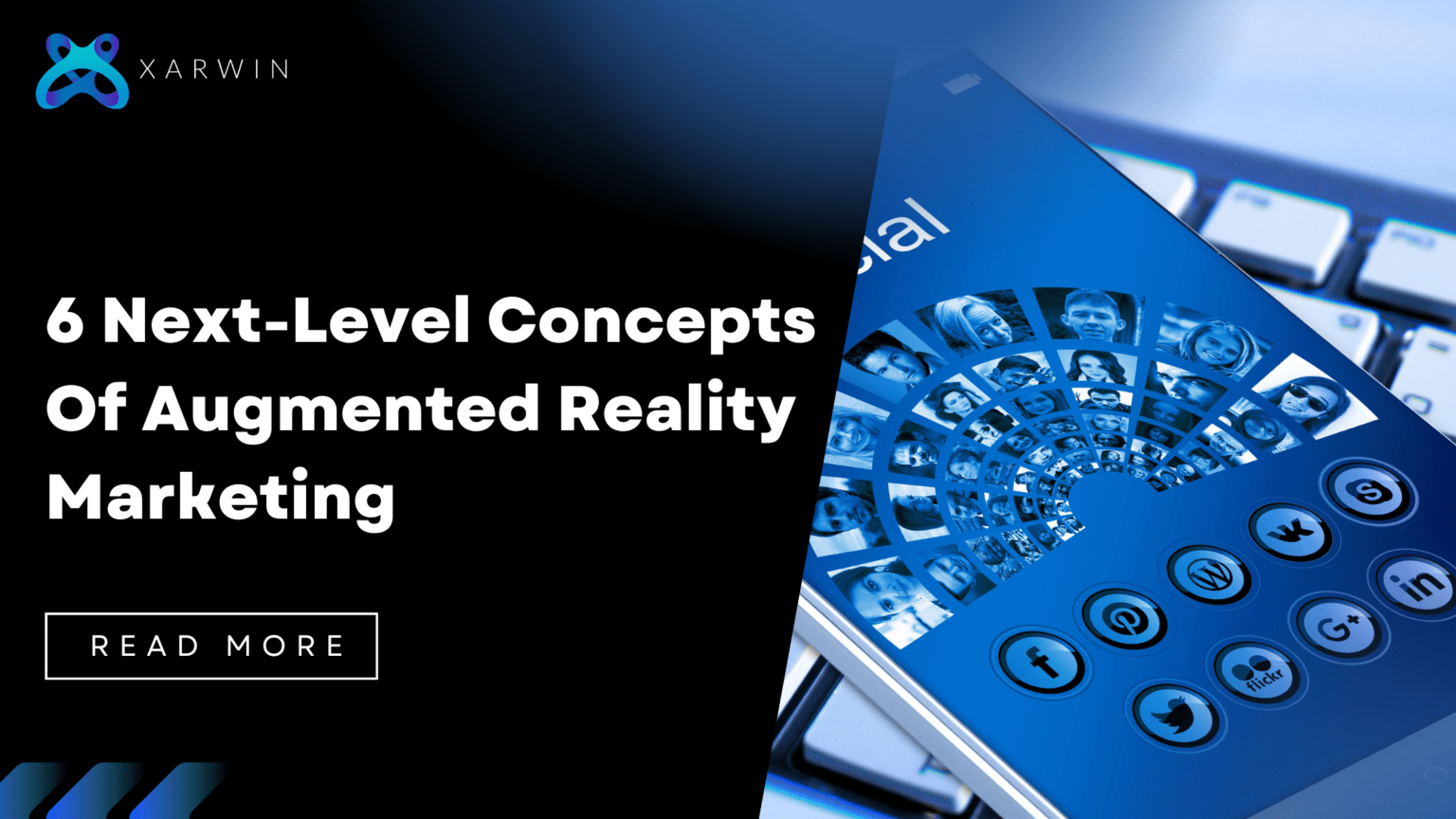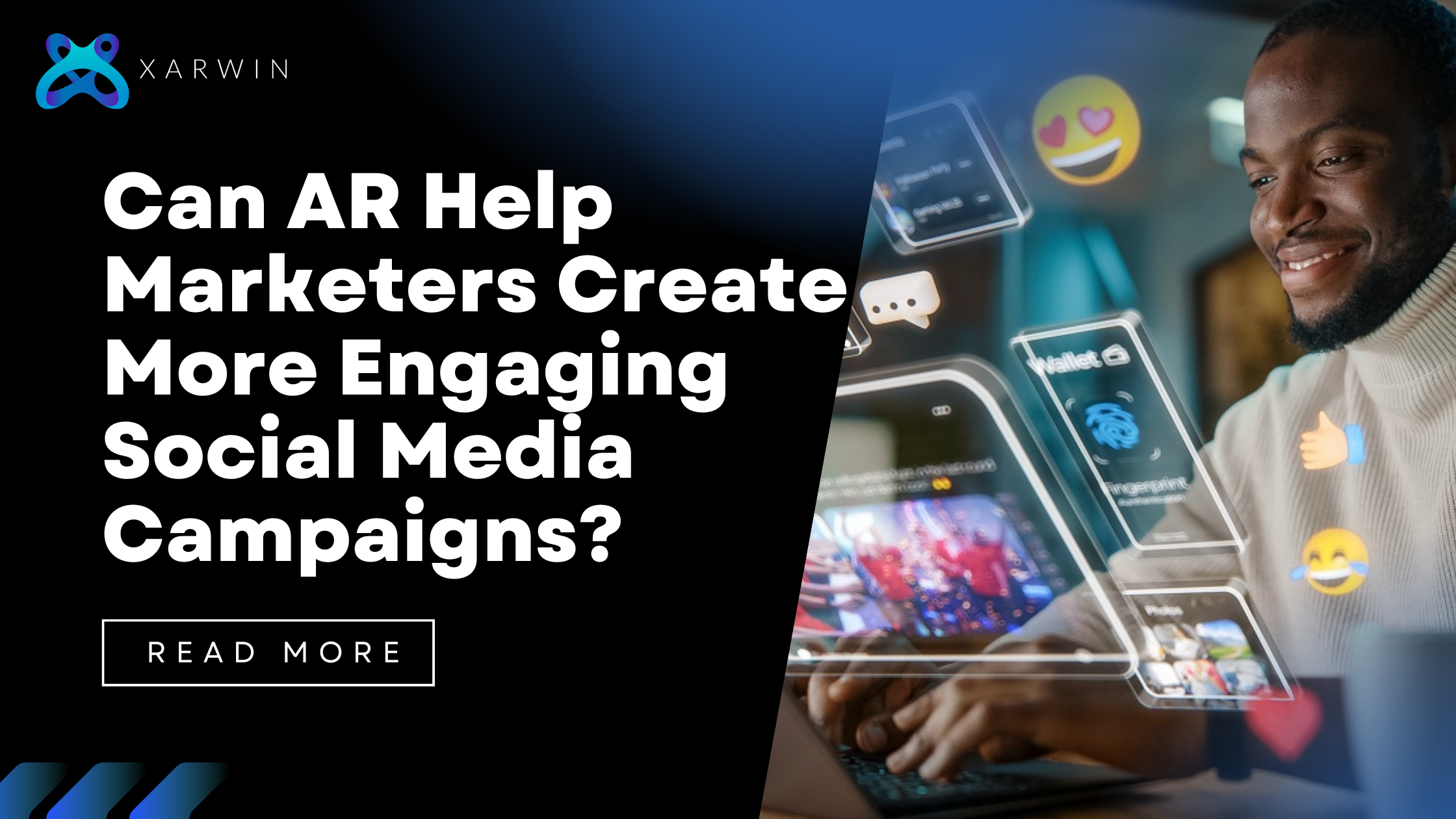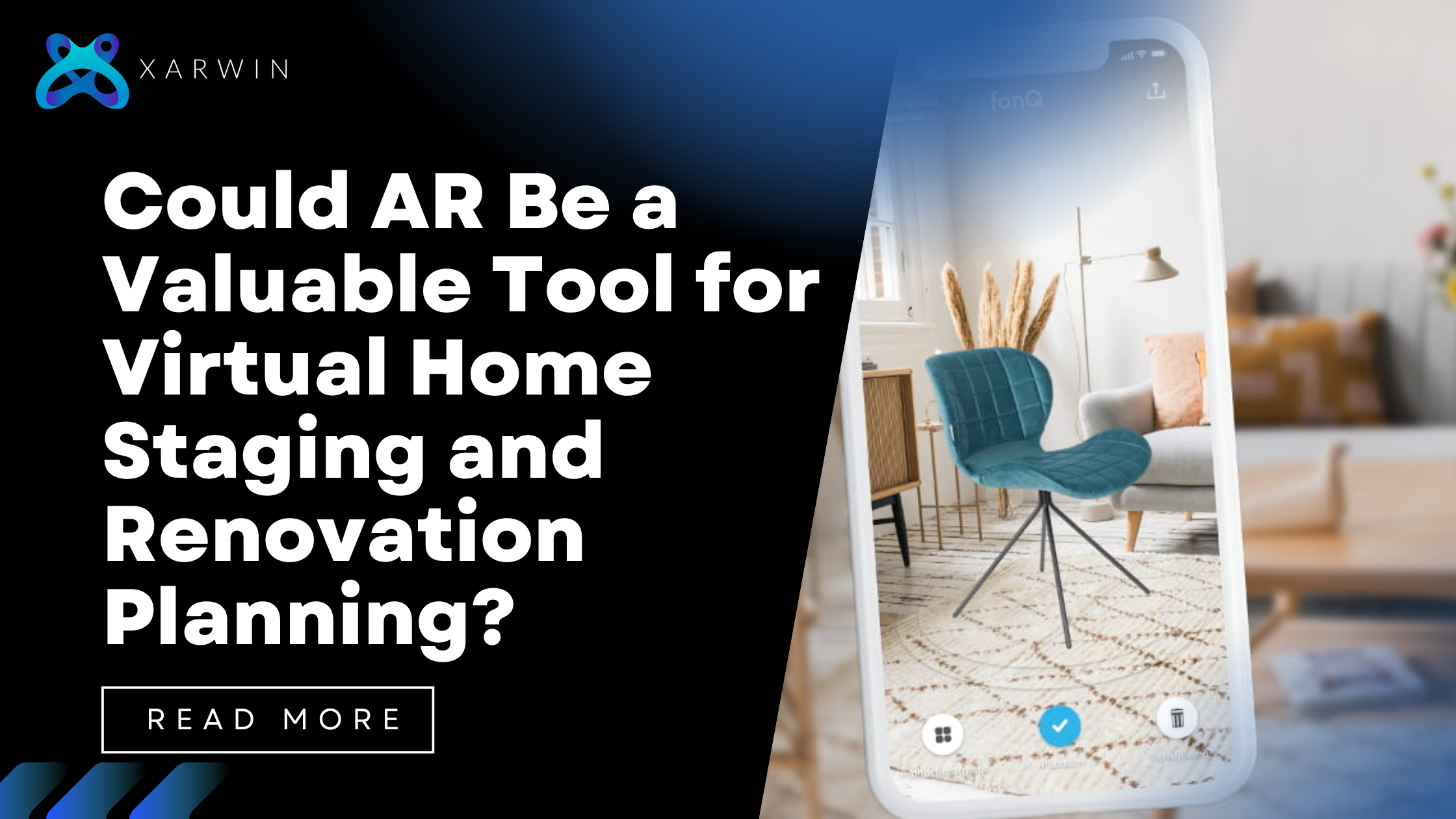Once upon a time, marketing was all about billboards, television ads, and print media. But as technology advances, so does the world of advertising. Augmented reality is the new frontier in marketing, providing businesses with the ability to create interactive and immersive experiences for their customers. By leveraging this technology, companies can take their marketing strategies to the next level and stand out in a crowded marketplace.
In this blog, we’ll explore six innovative concepts of augmented reality marketing that can help businesses enhance their marketing strategies and build brand loyalty. Get ready to enter a world of endless possibilities with AR marketing!
#1 Interactive Product Visualization
AR visualization has transformed how customers interact with products. AR technology allows customers to virtually try products, enhancing their experiences before making a purchase. Through AR, businesses can provide interactive and immersive product demonstrations, allowing customers to make informed decisions about their purchases.
AR technology can be used to create 3D models of products that customers can interact with, allowing them to see how the product will look and feel in real life. This can be especially useful for products that are difficult to visualize, such as furniture or clothing. By using AR technology, businesses can provide customers with a better understanding of their products, which can lead to increased sales and customer satisfaction.
Benefits of AR Visualization
- Enhances customer experience before making a purchase
- Provides interactive and immersive product demonstrations
- Allows customers to make informed decisions about their purchases
- Provides a better understanding of products
- Can lead to increased sales and customer satisfaction
Examples of AR Visualization
- Creating 3D models of products that customers can interact with
- Allowing customers to see how the product will look and feel in real life
- Particularly useful for products that are difficult to visualize, such as furniture or clothing
- Provides a better understanding of products, which can lead to increased sales and customer satisfaction
#2 Gamified Brand Experiences
A gamification is a powerful tool for brand promotion. By creating interactive and engaging AR games, businesses can increase customer participation and incentivize brand loyalty. Gamified AR experiences allow businesses to increase brand awareness and foster customer engagement.
AR games can be used to promote a brand by incorporating elements of the brand into the game. For example, a cosmetic company could create a game where customers have to apply makeup to a virtual model, with the company’s products being the only options available. By incentivizing customers to participate in the game, businesses can increase brand awareness and encourage customer loyalty.
Benefits of Gamification in AR Marketing
- Increases customer participation and engagement
- Incentivizes brand loyalty
- Increases brand awareness
Examples of Gamified AR Experiences
- A cosmetic company creating a game where customers have to apply makeup to a virtual model, with the company’s products being the only options available
- A fast-food chain creating a game where customers have to collect ingredients to build a virtual burger, with the restaurant’s menu items being the ingredients
- A car company creating a racing game where customers can test drive virtual versions of their cars, with the company’s branding and products being prominently featured
#3 Location-Based Augmented Reality
Location-based AR marketing campaigns use geolocation technology to provide location-specific content to customers. AR-based navigation and information enhance the physical retail experience, providing customers with a new level of interaction with products. Location-based AR marketing campaigns engage customers in real-world settings, increasing brand exposure and customer engagement.
AR technology can be integrated with GPS to provide customers with location-specific content, such as information about nearby stores or products. This can be especially useful for businesses with physical storefronts, as it allows them to provide customers with a unique and engaging experience while they shop. By using AR technology in this way, businesses can increase brand exposure and customer engagement.
Benefits of Location-Based AR Marketing
- Provides location-specific content to customers
- Enhances the physical retail experience
- Increases brand exposure and customer engagement
- Allows businesses to provide customers with a unique and engaging experience while they shop
Examples of Location-Based AR Marketing
- Providing customers with information about nearby stores or products
- Enhancing the physical retail experience by providing customers with a new level of interaction with products
- Using AR technology in-store to provide customers with a unique and engaging experience while they shop
#4 Personalized AR Experiences
Personalized AR experiences create a unique connection between customers and brands. By customizing AR content to cater to individual preferences, businesses can deliver targeted AR marketing experiences. Leveraging user data to personalize AR content enhances customer engagement, creating a personalized connection between customers and brands.
AR technology can be used to create personalized experiences for customers based on their preferences. For example, a clothing retailer could create a virtual try-on experience that suggests outfits based on the customer’s style preferences. By using AR technology in this way, businesses can create a more personalized experience for customers, which can lead to increased customer satisfaction and loyalty.
Benefits of Personalized AR Experiences
- Creates a unique connection between customers and brands
- Delivers targeted AR marketing experiences
- Enhances customer engagement
- Creates a personalized connection between customers and brands
- This leads to increased customer satisfaction and loyalty
Examples of Personalized AR Experiences
- A clothing retailer creating a virtual try-on experience that suggests outfits based on the customer’s style preferences
- An e-commerce website providing personalized product recommendations based on the customer’s browsing and purchase history
- A makeup brand creating a personalized virtual try-on experience that suggests makeup products based on the customer’s skin tone and preferences
#5 Social Media AR Filters and Effects
Social media AR filters and effects are a powerful tool for brand exposure. By creating branded AR filters and effects for popular social media platforms, businesses can promote user-generated content and viral marketing through AR experiences. Social media AR filters and effects harness the power of social media platforms for AR-driven brand exposure.
AR filters and effects can be used to promote a brand on social media by incorporating elements of the brand into the filter or effect. For example, a cosmetic company could create an AR filter that applies its products to the user’s face. By encouraging users to share their experiences with the filter, businesses can increase brand exposure and encourage user-generated content.
Benefits of Social Media AR Filters and Effects
- Promotes user-generated content and viral marketing
- Increases brand exposure
- Provides a unique and engaging experience for users
Examples of Social Media AR Filters and Effects
- A cosmetic company creates an AR filter that applies their products to the user’s face
- A fashion retailer creates an AR filter that superimposes their clothing on the user’s image
- A restaurant creates an AR filter that adds a branded virtual item to the user’s environment, such as a plate of food or a menu item
#6 Virtual Try-On and Virtual Showrooms
Virtual try-on and virtual showrooms are transforming the online shopping experience. AR technology enables customers to try on fashion, cosmetics, and accessories virtually. Virtual showrooms provide customers with the ability to explore and customize products, enhancing the online shopping experience and reducing purchase hesitation.
AR technology can be used to create virtual try-on experiences for customers, allowing them to see how products will look on them before making a purchase. This can be especially useful for products that are difficult to visualize, such as makeup or jewelry. By using AR technology in this way, businesses can provide customers with a better understanding of their products, which can lead to increased sales and customer satisfaction.
Benefits of Virtual Try-On and Virtual Showrooms using AR Technology
- Enhances the online shopping experience
- Reduces purchase hesitation
- Provides a better understanding of products
- Increases sales and customer satisfaction
Examples of Virtual Try-On and Virtual Showrooms using AR Technology
- Creating AR experiences for customers to see how products will look on them before making a purchase
- Useful for products that are difficult to visualize, such as makeup or jewelry
- Creating virtual showrooms that allow customers to explore and customize products
- Providing an engaging and interactive shopping experience
Conclusion
Businesses must embrace innovative AR approaches to stay competitive. AR technology has the potential to transform marketing strategies by providing interactive and immersive experiences for customers. By implementing the six next-level concepts of augmented reality marketing, businesses can enhance customer engagement, increase brand exposure, and foster brand loyalty.
AR technology is not just limited to mobile applications; it can now be used on AR websites and web-based AR platforms to enhance the online shopping experience. AR technology is making it possible for businesses to create engaging and interactive experiences for their customers, whether they are shopping online or in-store. By using AR technology in their marketing strategies, businesses can stay ahead of the competition and provide their customers with a unique and engaging experience that can help build brand loyalty and increase sales.
As a trailblazer in augmented reality (AR), Xarwin combines innovation with a user-centric approach to redefine industry standards. Its team of expert engineers, designers, and strategists excels in crafting immersive AR experiences across various sectors. With each project, the company not only meets current demands but also shapes future trends, establishing itself as a leading force in the AR landscape.





